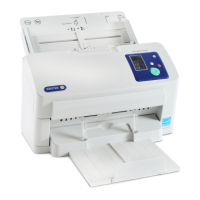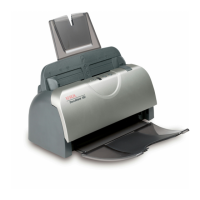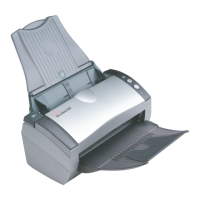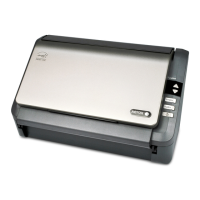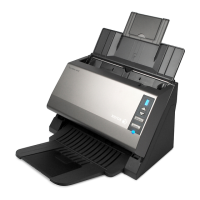
Do you have a question about the Xerox DocuMate 5460 and is the answer not in the manual?
| Film scanning | - |
|---|---|
| Color scanning | Yes |
| Maximum scan size | 318 x 210 mm |
| Output color depth | 24 bit |
| ADF scan speed (b/w, A4) | 60 ppm |
| Optical scanning resolution | 600 x 600 DPI |
| Duplex ADF scan speed (b/w, A4) | 120 ipm |
| Scanner type | ADF scanner |
| Product color | Blue, White |
| Scan to | Cloud, E-mail, File |
| Sensor type | CIS |
| Scan drivers | ISIS, TWAIN, WIA |
| Daily duty cycle (max) | 6000 pages |
| Auto document feeder (ADF) input capacity | 75 sheets |
| Maximum scan area (ADF) | 216 x 4953 mm |
| Minimum scan area (ADF) | 48 x 71 mm |
| Auto Document Feeder (ADF) media weight | 19 - 206 g/m² |
| USB version | 2.0 |
| Standard interfaces | USB 2.0 |
| Input voltage | 110-240 V |
| Power supply type | AC |
| Power consumption (standby) | 1 W |
| Power consumption (typical) | 25 W |
| Minimum RAM | 2048 MB |
| Minimum processor | Pentium 4 |
| Minimum storage drive space | 350 MB |
| Windows operating systems supported | Windows 10 Education, Windows 10 Education x64, Windows 10 Enterprise, Windows 10 Enterprise x64, Windows 10 Home, Windows 10 Home x64, Windows 10 Pro, Windows 10 Pro x64, Windows 2000 Professional, Windows 7 Enterprise, Windows 7 Enterprise x64, Windows 7 Home Basic, Windows 7 Home Basic x64, Windows 7 Home Premium, Windows 7 Home Premium x64, Windows 7 Professional, Windows 7 Professional x64, Windows 7 Starter, Windows 7 Starter x64, Windows 7 Ultimate, Windows 7 Ultimate x64, Windows 8, Windows 8 Enterprise, Windows 8 Enterprise x64, Windows 8 Pro, Windows 8 Pro x64, Windows 8 x64, Windows 8.1, Windows 8.1 Enterprise, Windows 8.1 Enterprise x64, Windows 8.1 Pro, Windows 8.1 Pro x64, Windows 8.1 x64, Windows Vista Business, Windows Vista Business x64, Windows Vista Enterprise, Windows Vista Enterprise x64, Windows Vista Home Basic, Windows Vista Home Basic x64, Windows Vista Home Premium, Windows Vista Home Premium x64, Windows Vista Ultimate, Windows Vista Ultimate x64, Windows XP Home, Windows XP Home x64, Windows XP Professional, Windows XP Professional x64 |
| Cables included | AC, USB |
| Depth | 208 mm |
|---|---|
| Width | 318 mm |
| Height | 196 mm |
| Weight | 4000 g |
Provides instructions for safe operation and compliance with safety requirements.
Outlines guidelines for safe operation of Xerox equipment, including do's and don'ts.
Details electrical safety warnings, supply requirements, and disconnection procedures.
Describes conditions requiring immediate power off and disconnection of the machine.
Specifies operator maintenance procedures and restrictions for the product.
Lists the agencies and safety standards by which the product is certified.
Provides customer help line information for Environment, Health, and Safety queries.
Lists the items included in the scanner packaging for user verification.
Details the necessary hardware and software specifications for scanner operation.
Describes the printed and soft-copy documentation provided with the scanner.
Provides an overview of the scanner's components and their functions.
Guides the user through the process of safely removing the scanner from its packaging.
Provides step-by-step instructions for attaching the scanner's input tray.
Details the procedure for connecting the scanner's power supply and cord.
Lists important checks and considerations before starting the scanner installation process.
Guides through installing the scanner software from the disc and connecting the hardware.
Explains how to install optional software applications bundled with the scanner.
Instructs on accessing the scanner and software user guides available on the installation disc.
Explains the importance and process of registering the scanner for support and updates.
Details how to use the card guide for scanning IDs and credit cards alongside regular paper.
Provides methods to prepare documents for optimal scanning performance and prevent jams.
Explains how to scan thicker items by adjusting scanner settings.
Lists the types of paper documents and cards that can be scanned by the scanner.
Identifies document types that may reduce scanner life or cause damage.
Lists document types that should not be scanned to avoid damage to the scanner.
Describes the different methods available for scanning with the Xerox scanner.
Explains the pre-configured settings for each OneTouch button upon installation.
Details how to initiate scans using the on-screen OneTouch button panel.
Describes the different views and controls available in the OneTouch panel interface.
Provides instructions on how to customize the settings for each OneTouch button.
Explains how to configure OneTouch destinations and file naming conventions.
Covers creating, editing, and deleting scan configurations for different scanning needs.
Details the various file formats available for saving scanned images and documents.
Explains how to create individual files for each scanned page.
Describes common image file formats like BMP, TIFF, JPG, and PNG for scanned photos.
Details text formats and their relation to OCR for editable document conversion.
Guides on setting up the scanner to open an interface before scanning for adjustments.
Explains how to configure the scanner to automatically open scanned documents.
Covers scanning documents directly to a folder for storage.
Describes how to set the scan destination folder using Windows folder options.
Details how to set up multiple configurations to scan to different folders.
Explains how to scan directly to a CD using a CD burner.
Guides on setting up printers and faxes as OneTouch destinations for scanning.
Details configuring PaperPort as a destination for scanned documents.
Explains how to scan directly to a SharePoint site using OneTouch.
Covers configuring OneTouch to send scans directly to an FTP server.
Explains how to configure OneTouch to send scans via email through an SMTP server.
Guides on scanning to email applications like Outlook or Windows Mail.
Details settings for storing email attachments and color document handling.
Explains scanning to text editing applications and using OCR for editable text.
Provides steps to add custom text editing applications to OneTouch.
Guides on converting scanned documents into HTML web pages.
Explains using event forwarding to specify applications for scanning.
Details how to configure image editing applications as OneTouch destinations.
Covers adding and managing image editing applications within OneTouch.
Provides steps to add custom image editing applications to OneTouch.
Explains configuring applications that can open or edit PDF files.
Guides on selecting any application on the computer as a scan destination.
Details how to send a single scan to multiple destinations simultaneously.
Explains using separators to create separate files for scanned batches.
Guides on using OCR to convert scanned text into editable formats.
Details text formats and their relation to OCR for editable document conversion.
Explains how to configure advanced OCR settings within OneTouch.
Covers OCR options for spellchecking, character recognition, and language settings.
Guides on creating custom dictionaries for improving OCR accuracy.
Provides instructions on how to edit existing user dictionaries.
Details settings for input and output formats for scanned documents.
Explains how to use Visioneer Acuity features for enhanced scan quality.
Covers selecting and configuring Visioneer Acuity settings for scan configurations.
Guides on viewing scanner hardware information and properties.
Details scanner device settings, including firmware and driver versions.
Explains how to configure scanner interface behavior and driver options.
Describes how different applications access the scanner interface for scanning.
Explains the TWAIN standard and Microsoft WIA for image transfer.
Guides on loading documents and adjusting scan settings in the interface.
Explains using predefined scanning profiles from a locked interface.
Details how to use the preview window to adjust settings and define scan regions.
Guides on creating custom scan regions within the preview window.
Provides step-by-step instructions for defining custom scan areas.
Explains how to manipulate scan regions within the preview window.
Guides on changing the processing order of multiple scan regions.
Details how to remove all custom scan regions from the preview area.
Covers basic and advanced options for configuring the document source.
Describes fundamental settings like Duplex and color modes for document scanning.
Details advanced document handling options such as Multi-stream and Duplex.
Explains how to individually set color modes for duplex scanning sides.
Displays basic scan options and provides links to their respective interface areas.
Covers creating, importing, exporting, and managing scanner presets.
Details the main, advanced, and scanner model specific settings for document scanning.
Explains why certain options might be grayed out or unavailable.
Describes the most commonly used scan settings available on the main panel.
Explains how resolution affects image clarity and file size, with recommended settings.
Guides on selecting standard or custom document sizes for scanning.
Details how to specify custom document dimensions for scanning.
Explains enabling support for scanning long paper sizes.
Guides on using manual feed mode for scanning one page at a time.
Describes the option to automatically straighten skewed scanned pages.
Explains how to rotate the final image after scanning is complete.
Details rotating the back side image for calendar style orientation in duplex scans.
Explains combining both sides of a scanned item onto one page in duplex mode.
Covers advanced image enhancement options for improving scan clarity.
Guides on detecting and removing blank pages from scanned batches.
Explains removing thin lines from scan edges and filling margins with background color.
Describes options for automatically cropping scanned items to their original size or length.
Details image compression functions for faster image transfer and smaller file sizes.
Explains compressing images for faster transfer, with quality adjustment options.
Guides on adjusting the compression level for image quality and transfer speed.
Explains selecting encoding ratios for color information and luminosity.
Covers options specific to the scanner model, like Detect Double Feeds.
Explains the scanner's ability to detect when multiple pages feed simultaneously.
Describes the option to detect when a page is fed through at an angle.
Explains the option to detect pages with folded corners during scanning.
Guides on splitting scanned documents into multiple images based on length.
Explains slowing down exit rollers to help stack short items in the output tray.
Guides on selecting paper type and handling for scan batches.
Details enabling patch code detection for automated scanning actions.
Explains enabling control sheets to automatically change scan settings.
Guides on using file separation sheets to create separate files for scanned batches.
Covers options for image processing and enhancing scan quality.
Describes the most common scan settings available on the main panel.
Details advanced options for processing colors in final scans.
Covers advanced image enhancement options for improving scan clarity.
Describes options specific to the scanner model for image processing.
Explains why certain options might be grayed out or unavailable.
Describes how options on the Main panel may have advanced adjustments on other panels.
Explains adjusting image brightness to darken or lighten the scanned image.
Guides on adjusting image contrast to emphasize differences between light and dark portions.
Explains adjusting the tone curve for image enhancement and its effect on brightness/contrast.
Describes reversing the color of each pixel in the scanned image.
Explains flipping the scanned image horizontally from left to right.
Details options for reducing bit depth, available for black and white scans.
Guides on setting light/dark levels and dynamic adjustment for OCR text.
Explains filling punched holes in document margins with the background color.
Details how to set scanner options for processing colors in specific modes.
Guides on removing a specific color from an image, choosing from predefined or custom colors.
Explains applying color correction to approximate original item colors using default Gamma table.
Guides on enabling automatic color detection and setting color percentage thresholds.
Covers advanced image enhancement options for improving scan clarity.
Explains removing speckles (small spots) from the background of scanned images.
Guides on sharpening lines and improving clarity of scanned images.
Explains removing wavy or rippled lines that may appear in scanned images.
Guides on automatically detecting and setting a solid background color for scanned items.
Explains automatically detecting the background color and setting it to white.
Automatically detects and adjusts the white level using the scanned item's leading edge.
Guides on setting what the scanner interprets as white in the final image.
Explains setting what the scanner interprets as black in the final image.
Covers options specific to the scanner model for image processing.
Guides on letting the scanner automatically adjust lightness and darkness of scans.
Explains improving barcode readability by removing stray pixels on straight lines.
Guides on adjusting brightness for text areas when using Bit depth reduction.
Covers configuring add-on modules, interface options, and hardware properties.
Explains enabling installed image processing modules for scanning.
Guides on changing the order in which image processing modules are applied.
Displays hardware information for the scanner, including power adjustments and maintenance.
Details settings for sleep mode, power off, and device reset.
Covers roller cleaning reminders, counters, and launching the User Utility.
Explains image processing options available when Visioneer Acuity is installed or disabled.
Guides on disabling hardware image processing features via Windows Control Panel.
Explains how to determine the scanner's firmware version for feature availability.
Details hardware image processing options and their availability based on resolution and page length.
Guides on accessing scanner properties for maintenance, options, and interface behavior.
Details scanner device settings including firmware, serial number, and interface.
Explains configuring scanner interface behavior and driver options for various scenarios.
Covers disabling or enabling hardware image processing (HW IP) options for the scanner.
Guides on how to resolve paper jams in the scanner's automatic document feeder.
Provides instructions for cleaning the exterior surfaces of the scanner.
Details cleaning the scanner glass, background plates, and sensors for optimal performance.
Explains the process of replacing worn roller assemblies to resolve paper feeding issues.
Introduces the User Utility software for scanner maintenance and troubleshooting.
Provides solutions for common scanner problems and error messages.
Guides on removing scanner drivers and related software from the computer.
Lists the technical specifications for the Xerox DocuMate 5445 / 5460 scanner.
Provides a list of part names and numbers for scanner replacements.
Covers FCC regulations for the US and CE marking for the European Union.
Outlines legal restrictions on reproducing certain documents in the United States and Canada.
Provides information on the proper recycling and disposal of the Xerox product.
Details the scanner's ENERGY STAR qualification and energy-saving features.
